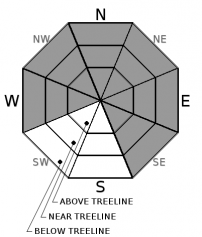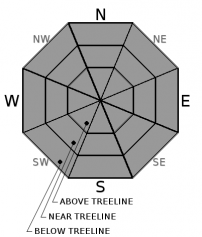| Thursday | Thursday Night | Friday | |
|---|---|---|---|
| Weather: | Cloudy with a chance of rain in the morning. Rain becoming widespread this afternoon. Snow levels between 7500 and 8500 ft. | Rain and snow. Snow level falling to 7000 ft. overnight | Snow in the morning with snow decreasing in the afternoon |
| Temperatures: | 43 to 49 deg. F. | 27 to 33 deg. F. | 33 to 38 deg. F. |
| Mid Slope Winds: | Southwest | Southwest | Southwest |
| Wind Speed: | 25 to 35 mph increasing to 40 to 60 mph with gusts to 100 mph | 30 to 45 mph decreasing to 20 to 35 mph after midnight. Gusts to 60 mph in the evening | 15 to 25 mph with gusts to 40 mph |
| Expected snowfall: | Rain: .6-1.6 | Rain: .6 to 1.6 in. | Snow: 6 to 12 | 3 to 6 |
| Thursday | Thursday Night | Friday | |
|---|---|---|---|
| Weather: | Cloudy with a chance of rain or snow in the morning. Rain and snow becoming widespread this afternoon. Snow levels between 7500 and 8500 ft. | Snow | Snow in the morning with snow decreasing in the afternoon |
| Temperatures: | 35 to 43 deg. F. | 24 to 29 deg. F. | 28 to 33 deg. F. |
| Ridge Top Winds: | Southwest | Southwest | Southwest |
| Wind Speed: | 60 to 80 mph with gusts to 145 mph | 45 to 60 mph with gusts to 135 mph decreasing to 35 to 50 mph with gusts to 120 mph after midnight | 25 to 35 mph with gusts to 85 mph |
| Expected snowfall: | Rain: .6 -1 in. | Snow: 4 to 8 | 6 to 12 | 3 to 6 |

























